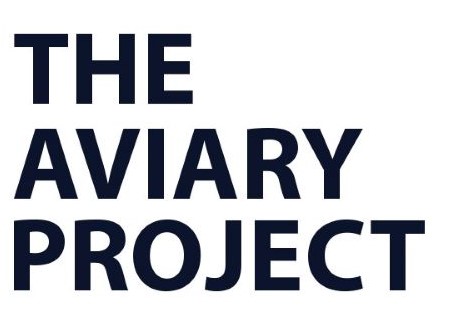We know that networking is essential for a successful career path, but where should we start? How can we find the people we want to connect with and what is the best approach to contact them?
In this article, I will explain to you how in five months, I acquired a network of +150 contacts in London, as an MBA student. My strategy consists of 4 steps: target, connect, meet, and follow-up. I illustrate them with my own experiences under the section “In practice” and I propose mini exercises under the section “Try it!” in order for you to start developing your own network. These steps require the use of some tools that are listed in my supplementary article “Tips and tricks to network easily” in conjunction with this article.
Step 1: TARGET

First of all, know what you want! You just need to focus on 2 variables: which industry/company you want to target, and which position you want to pursue. This focus requires a personal reflection of your objectives, your desires, and where you see yourself in the future. Networking is already a lot of effort. Therefore, try to make sure you knock on the right doors, so that your effort is not in vain.
There are two kinds of people you want to contact:
1. People you want to connect with;
2. People who will give you access to the first ones.
Let us call people from category 1 and 2 our “targets”. Always keep in mind that the world is small and everybody knows everyone. So, always treat your targets well and be respectful, even if they do not accept to meet you.

It is essential to create a list with your targets, but how do you contact someone if you do not know their name? Identify the networks that the target contacts may be located in. By identifying the relevant networks regarding your final goal, you will determine “the sources” where you can find who you are looking for.
- In practice: When I started my MBA, I knew I wanted to know more about the mobility industry. Therefore, I joined a start-up, The Aviary Project, active in Urban Air Mobility. In exchange for my work, I increase my knowledge about the industry and I connect with leading experts around the globe.
Think about groups, projects or companies related to your selected industry or people who might be able to connect you with your target. These are powerful ways to identify who you want to contact with a minimum amount of effort. Try to use different tools to list these networks. Here are some examples:
1. Google
2. LinkedIn
3. Facebook
4. Twitter
5. Blogs (preferably specialised) such as Medium
6. Articles
7. Interviews
8. Personal websites
- Try it!: Open a spreadsheet and use one of the above tools. List some contacts/companies related to your targeted industry/company. For example, if you want to work in tech, list tech-companies that attract you. If you want to work for Microsoft, try to identify their latest projects and partnerships that interest you. See below for an example of my personal networks:

- In practice: I listed companies (including start-ups), influencers, blogs and groups that are currently active by mainly using Google and LinkedIn. I ranked each connection according to my priorities and their relevance to my target industry. I searched for names and listed them with their position and company.
Go big or go home!
Well done. Now that you know where to find your targets, let’s jump into it! Try to identify individual contact names. For example, you could use LinkedIn and its search engine. I refer to my supplementary article for advance explanations about the tools you may want to consider when listing your targets. My advice is “go big or go home!”. Try to target CxOs, Heads of departments or (Senior) Managers. You may want to contact junior profiles if you need to collect more information about the position, the company or the industry in order to make a good impression and show you are knowledgeable when you will catch the “big fish”.
- Try it!: Use your spreadsheet to create another tab and list the names of your targets including contact information and where you found this information.
Step 2: CONNECT
Contact you targets either via email or during an event
You have now a list of targets. It is time to contact them! You may want to consider multiple strategies such as:
1. Direct e-mail
2. Meet at a business event
3. Direct message through a social network
Feel free to use the method you are the most comfortable with. I recommend the first 2 methods as the last one could be perceived as “intrusive”, more specifically if, for example, you connect via Facebook.
Direct Mails

Where should you search to find the professional e-mail address? I suggest the following non-exhaustively methods:
– Skrapp (explanations of its use in the supplement)
– Alumni centre of your University
– Company websites
– Blogs
Unfortunately, you will not always be able to find the professional e-mail address. My advice is to guess; try multiple templates such as name.surname@company.com or name_first_letter.surname@company.com. I list the most common professional e-mail templates in the supplement reading.
Be short and go straight to the point
I recommend the body of your e-mail to be short (around 100 words) and to focus on the following aspects:
– Who you are? – i.e. student at X university, employee at X company, etc…
– Why you are contacting this individual? – i.e. “I enjoyed your latest article on X and wanted to know more about it” or “I’m interested in learning about your career path”
– What do you expect? – “Would you be open for a coffee chat?” or “Would you mind to discuss these topics over a phone call?”
The subject matters; include a sentence short but straight to the point. I personally use the “Get to know you” words to make my objective clear.
Here is an example:
« Dear Mr(s)XX,
I hope this mail finds you well and you do not mind the direct contact.
My name is xxx and I’m currently a student/analyst/manager/… at xxx.
Based on your profile, you have developed quite a successful career in the xxx industry ever since. I am interested in that industry and I am considering a career change/to move from xxx to X industry.
Would you be open to share a little bit more of your experience in the company/role/studies/how?
Best regards,
xxx »
- Try it!: Adapt this example to your personal situation and objectives. Save the draft in your spreadsheet.
- In practice: I would say that 50% of the time people reply to my e-mail. I make sure to save the e-mail I sent in a specific folder to review for the follow-up step.
Meet the target at an event

Although meeting a person is further explained in the next step, never go to an event without being prepared! You can prepare yourself in the following two ways:
– Know your target: collect as much information as possible to make sure you have an engaging discussion.
– Know yourself: always keep in mind that if your profile looks attractive, your target might want to assess you, as part of an informal interview. Know your story and sell yourself if needed! In addition, your target may review your LinkedIn profile after you meet. Ensure that your profile is up to date!
Your career is worth more than £10
Try to target qualitative events, even if you have to pay a small entry fee. Your career is worth more than a £10 ticket, isn’t it? I suggest you review the profile of the speaker, the venue or the comments from the last event.
Step 3: MEET
Prepare your goals, questions and your story
Congratulations on having secured your first networking meeting! I can imagine that the stress may be rising and you want to get the most of the meeting time you will have with your contact. That’s great! It is important to respect your contact’s time by preparing for the meeting. You can prepare yourself using the following 3 steps:
1. Define your goal: why do you want to meet your target? To learn from their experience? To know more about the company/industry?, etc.
2. Prepare questions: I usually structure an informal meeting in three parts:
a. Get to know the target: experience, position, education and professional background, etc.
b. Learn more about the company and its industry.
c. The reason why you are in front of your contact: recruiting plan of the company, profiles and positions the company is looking to fill, other contacts they can introduce you to, etc.
3. Know your target and yourself: I refer to Step 2 Connect, listed above.
Note that the first 2 steps are essential to break the ice and benefit from the experiences of your contact.

I have a collaborative point of view regarding these meetings. Therefore, never ask for something if you are not invited to do so. Do not ask for an internship, job or whatever you would like to receive from your target. Do not be selfish and always keep in mind the question, “what can I do for them?”. Try to think about what added value you can bring to this person. The more you give, the more you receive…
- Try it!: I invite you to focus on defining your goals and preparing some questions. List your objectives and prepare relevant questions to have a structured interview. I suggest 10-15 questions for a 30-45 minute meeting. The more you prepare for the meeting, the more you will feel comfortable with guiding the discussions.
Listen to your target
Finally, listen to your target. The more you speak, the less time your contact will talk. It may sound ridiculous, but haven’t you ever been in a situation where you never stopped talking? I know you did!
Step 4: FOLLOW-UP

I still cannot believe how many people do not follow-up on their meetings. Please, send a mail within the next 24 hours to thank your target for their time. But before that, it is essential to capture the information you heard earlier. I advise you to create a networking tracker template which will meet your needs with at least the following information:
1. How did you first contact your person of interest, i.e social network, cold call, event, etc.?
2. When and where did you meet your target?
3. What do you remember from the meeting? Write down everything, any details you captured, even the number of children. This information can be useful when you will meet this individual again: “How are your children doing?”, “How was your last scuba dive?”, etc.
4. What are the next steps? Do you plan to contact the target back? Did you both agree on meeting again? …
5. Contact details: Name of the company, email address, etc.
- Try it!: Create your own template. See below for my suggested template:

Now you are ready to send an e-mail to thank the target for their time.

To conclude, although having a strategic approach to your networking efforts is essential to be successful, remember that this is human interaction. Therefore, the connection you will be able to create, or not, with your target will drastically affect the outcomes you can expect from your meeting.
Please share your tips
I encourage you to share your best tips and tricks to networking in the comments section below so that we all can be the best connectors!


